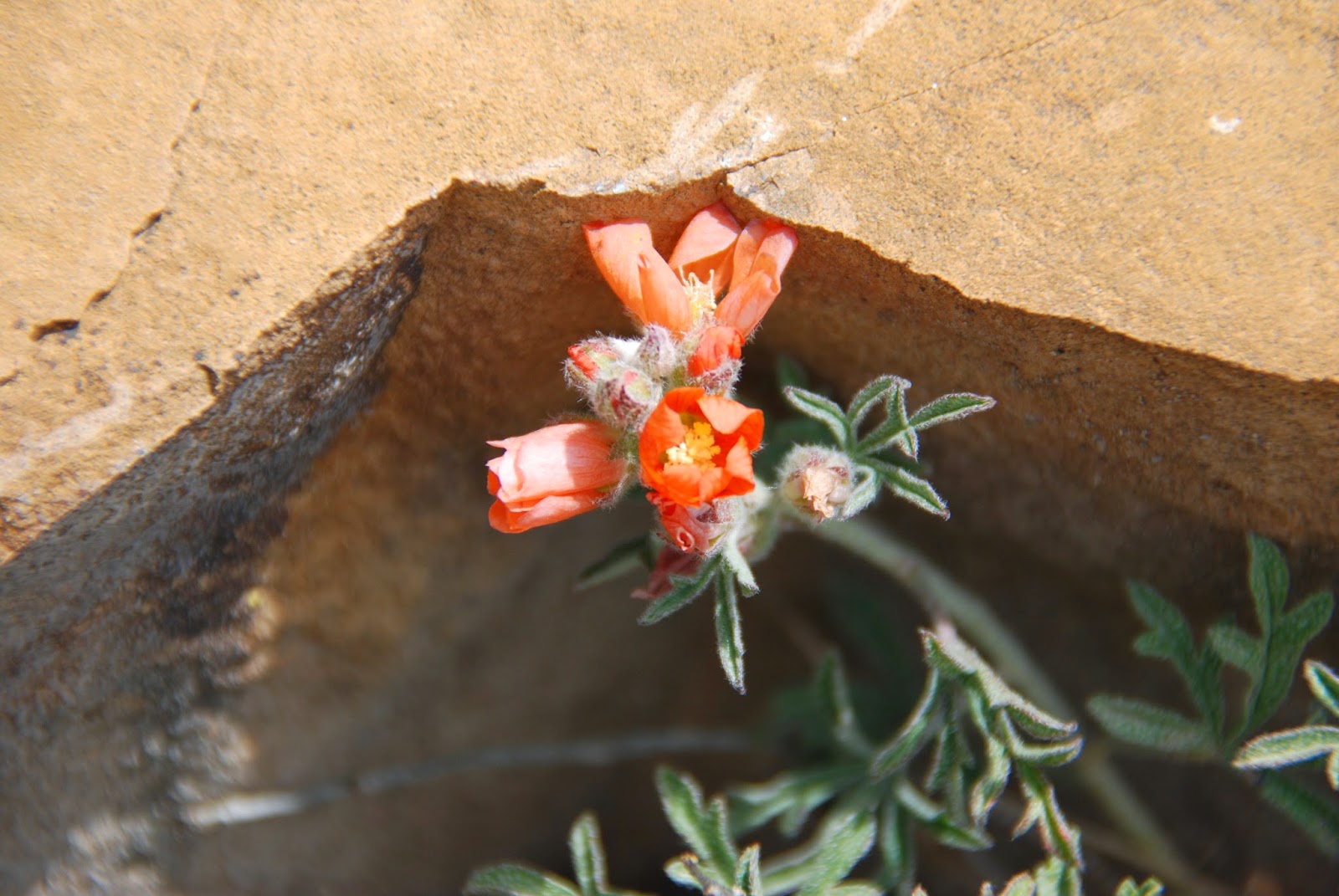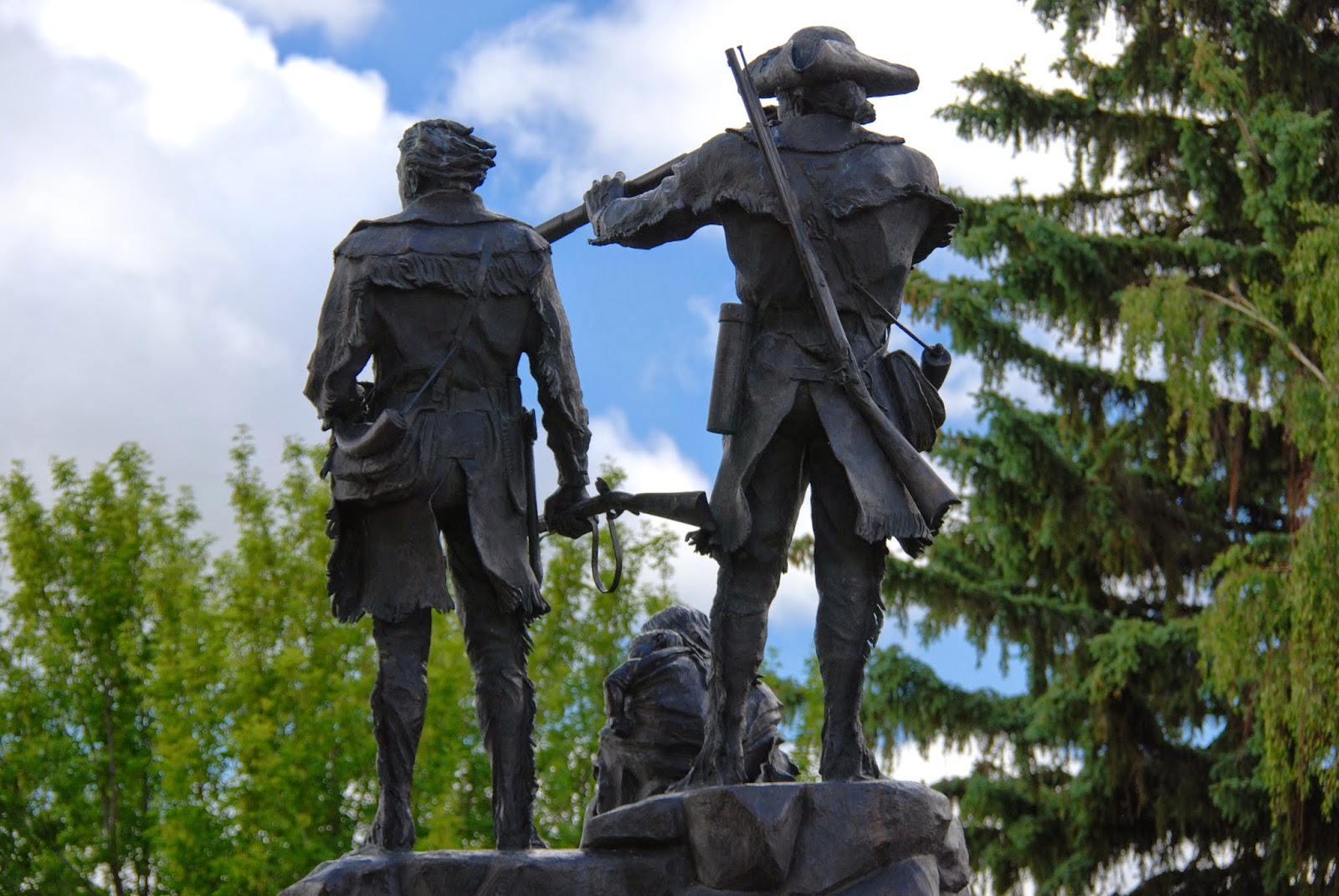We visited the CM Russell Museum
Russell's mural titled Lewis and Clark Meeting the Flathead Indians hangs in the state capitol building in Helena, Montana. Russell's 1918 painting Piegans sold for $5.6 million at a 2005 auction.
Art was always a part of Russell's life. Growing up in Missouri, he drew sketches and made clay figures of animals. Russell had an intense interest in the wild west and would spend hours reading about it. Russell would watch explorers and fur traders who frequently came through Missouri. Russell learned to ride horses at Hazel Dell Farm near Jerseyville, Illinois on a famous Civil War horse called "Great Britain". Russell's instructor was Col. William H. Fulkerson who had married into the Russell family. At the age of sixteen, Russell left school and went to Montana to work on a sheep ranch.
Russell came to Montana in 1880 at the age of 16. After an unsuccessful stint working on a sheep ranch, he found work with a hunter and trapper turned rancher named Jake Hoover, who owned a ranch in the Judith Basin, and from whom Russell learned much about the ways of the west. The two men remained lifelong friends. After a brief visit to his family in 1882, he returned to Montana, where he remained for the rest of his life. He worked as a cowboy for a number of outfits, and documented the harsh winter of 1886-1887 in a number of watercolors. Russell was working on the O-H Ranch in the Judith Basin of Central Montana at the time, when the ranch foreman received a letter from the owner, asking how the cattle herd had weathered the winter. Instead of a letter, the ranch foreman sent a postcard-sized watercolor Russell had painted of gaunt steer being watched by wolves under a gray winter sky. The ranch owner showed the postcard to friends and business acquaintances and eventually displayed it in a shop window in Helena, Montana. After this, work began to come steadily to the artist. Russell's caption on the sketch, "Waiting for a Chinook", became the title of the drawing, and Russell later created a more detailed version which is one of his best-known works.
Beginning in 1888, Russell spent a period of time living with the Blood Indians, a branch of the Blackfeet nation. It is believed that much of his intimate knowledge of Native American culture came from this period. Upon returning to white culture in 1889, he found the Judith Basin filling up with settlers, so he worked in more open places for a couple of years before settling in the area of Great Falls, Montana, in 1892, in an attempt to make a living as a full-time artist.
In 1896, Russell married his wife Nancy. He was 32 and she was 18. In 1897, they moved from the small community of Cascade, Montana to the bustling county seat of Great Falls, where Russell spent the majority of his life from that point on. There, Russell continued with his art, becoming a local celebrity and gaining the acclaim of critics worldwide. As Russell was not skilled in marketing his work, Nancy is generally given credit in making Russell an internationally known artist. She set up many shows for Russell throughout the United States and in London, creating many followers of Russell.
In 1913, Russell painted Wild Horse Hunters which depicts riders capturing wild horses, each band of which is dominated by a stallion. He used as much color as an artist could on his mountain landscapes.Russell the artist arrived on the cultural scene at a time when the "wild west" was being chronicled and sold back to the public in many forms, ranging from the dime novel to the wild west show and soon evolved into motion picture shorts and features of the silent era, the westerns that have become a movie staple. Russell was fond of these popular art forms and made many friends among the well-off collectors of his works, including actors and film makers such as William S. Hart, Harry Carey, Will Rogers and Douglas Fairbanks. Russell also kept up with other artists of his ilk, including fellow Old West painter Edgar Samuel Paxson, painter Edward "Ed" Borein and Will Crawford the illustrator.
On the day of Russell's funeral in 1926, all the children in Great Falls were released from school to watch the funeral procession. Russell's coffin was displayed in a glass sided coach, pulled by four black horses.

His studio.
Unfinished work in the studio.
Next we saw
Lewis and Clark and the Great Falls Portage
Lewis was thrilled to see the enormous waterfall, the Great Falls of the Missouri. It was 900 feet wide and 80 feet high with a "beautiful rainbow" just above the spray. Lewis called it "the grandest sight" he "ever beheld." More importantly, it meant that he and Clark had chosen the right fork in the Missouri River. All winter long they had been talking with Native Americans about a water route across the west. The Native Americans had described the territory in detail, including important landmarks like the waterfall in front of Lewis.Now it was time for the portage (the carrying of goods over an obstacle): Lewis and Clark's expedition party needed to carry their canoes and supplies around the waterfalls. Before they saw the Great Falls, Lewis and Clark thought the portage would be less than a mile. As Lewis scouted further, he found four more waterfalls and realized that the portage would be much longer. |
The ground was rocky, uneven, and hard. Prickly pear cactuses were everywhere. The Corps wore through their moccasins every two days. The intense heat of the summer sun was interrupted by violent storms, with thunder, rain, and hailstones the size of eggs. Swarms of gnats and mosquitoes pestered them. Rattlesnakes and grizzly bears were a constant threat.
| Finally, after nearly a month of hard labor, the portage was complete. The Corps and their equipment were on the other side of the falls. They built new boats to replace the one left behind. They started back on their journey on the Missouri River on July 15, 1805. They were more than a month behind schedule, but happy to be past the Great Falls. Their next challenges were to find horses and make it over the Rocky Mountains! |
Here are pictures of some of the falls they had to portage!

This reminded us of the painted horses in Saratoga!
While the portage route looks flat here from afar - it was anything but.
Prickly Pears - OUCH!
The Spring Flowers were beautiful!
Worlds Shortest River!
The Roe River
The Roe River runs between Giant Springs and the Missouri River in Great Falls, Montana, United States. The Roe River is only 201 feet (61 m) at its longest constant point. Towards its end, the Roe becomes surprisingly deep, at least 6–8 feet.
A successful campaign to get the Roe River recognized by the Guinness World Records as the shortest river in the world originated from students at Lincoln Elementary School in Great Falls, Montana. In 1988 Students Molly A. Petersen and future NFL football player Dallas Neil put in an appearance on The Tonight Show as part of this effort.
Previously, Oregon's D River was listed in Guinness World Records as the world's shortest river at 440 feet (134 m). This title was lost in 1989 when Guinness, in what was then called The Guinness Book of Records, named the Roe River as the world's shortest. Not to be deterred, the people of Lincoln City submitted a new measurement of the D River to Guinness of about 120 feet (36 m) long, when marked at "extreme high tide".
The water comes from----
Water bubbles up in the pool behind the rocks and then begins its 201ft travel.
Rainbow Trout at the hatchery.
FORT BENTON
Established by European-Americans Auguste Chouteau and Pierre Chouteau, Jr. of St. Louis in 1847 as the last fur trading post on the Upper Missouri River, the fort became an important economic center. For 30 years, the port attracted steamboats carrying goods, merchants, gold miners and settlers, coming from New Orleans, Memphis, St. Louis, Hannibal, Bismarck, Kansas City, etc. As the terminus for the 642-mile-long Mullan Road, completed by the US Army in 1860, Fort Benton was part of the overland link between trade on the Missouri River and the Columbia River, at Fort Walla Walla, Washington. Twenty thousand migrants used the road in the first year to travel to the Northwest. It became an important route for miners from both directions going into the interior of Idaho, and north to Canada. Riverboat travel to Fort Benton further provided an important route for miners to the newly discovered gold fields of southern Montana at what became Virginia City/Bannack beginning in 1860, and Helena, beginning in 1865.With the decline of the fur trade, the American Fur Company sold the fort to the US Army in 1865, which named it for Senator Thomas Hart Benton of Missouri. A town had grown up around it that surpassed the military presence. Besides being one of the most important ports on the Missouri-Mississippi river system, Fort Benton was once the "World's Innermost Port". Its importance in trade was superseded by the construction of transcontinental railroads in the late 19th century. In 1867 Fort Benton was the site where Union General Thomas Francis Meagher, then acting governor of Montana Territory, fell overboard from his steamboat and drowned in the river; his body was never recovered. On July 5, 1988 the Fort Benton area was struck by an F3 tornado that injured 2 people.
The heroic sized statue is located on Fort Benton's steamboat levee, next to the Missouri River. The statue commemorates the Lewis & Clark Expedition and the days they spent at the mouth of Maria's River determining the route to the Pacific Ocean. The statue shows Lewis, Clark and Sacagawea with her infant son. The memorial commemorates the nine days the Corps of Discovery camped at the confluence of the Marias River and Missouri River while exploration determined which river was actually the Missouri and the way to the Pacific.
But Ft. Benton is also known for -- and most proud of -- Old Shep, its "forever faithful" sheep dog. In the summer of 1936, a sheep herder fell ill and headed to Ft. Benton for treatment. His dog, Shep, came along. When the herder died a few days later, his body was crated up and sent back east to relatives. Shep followed the box to the Ft. Benton train depot, and watched nervously as his master was put on board and taken away. No one remembers the name of the herder.
But everyone remembers Shep. Because for the next five and a half years, Shep maintained a vigil at the station, greeting the four trains that arrived each day, waiting for his master to return.
Two and a half years into the watch, Old Shep was featured in Ripley's Believe It or Not, and became a Depression-era sensation. Fan mail poured in. School children sent Christmas gifts. Rail travelers took long detours off the mainline, just to stop in Ft. Benton and see this devoted dog meet their train.
The Trail Continues!



















































No comments:
Post a Comment